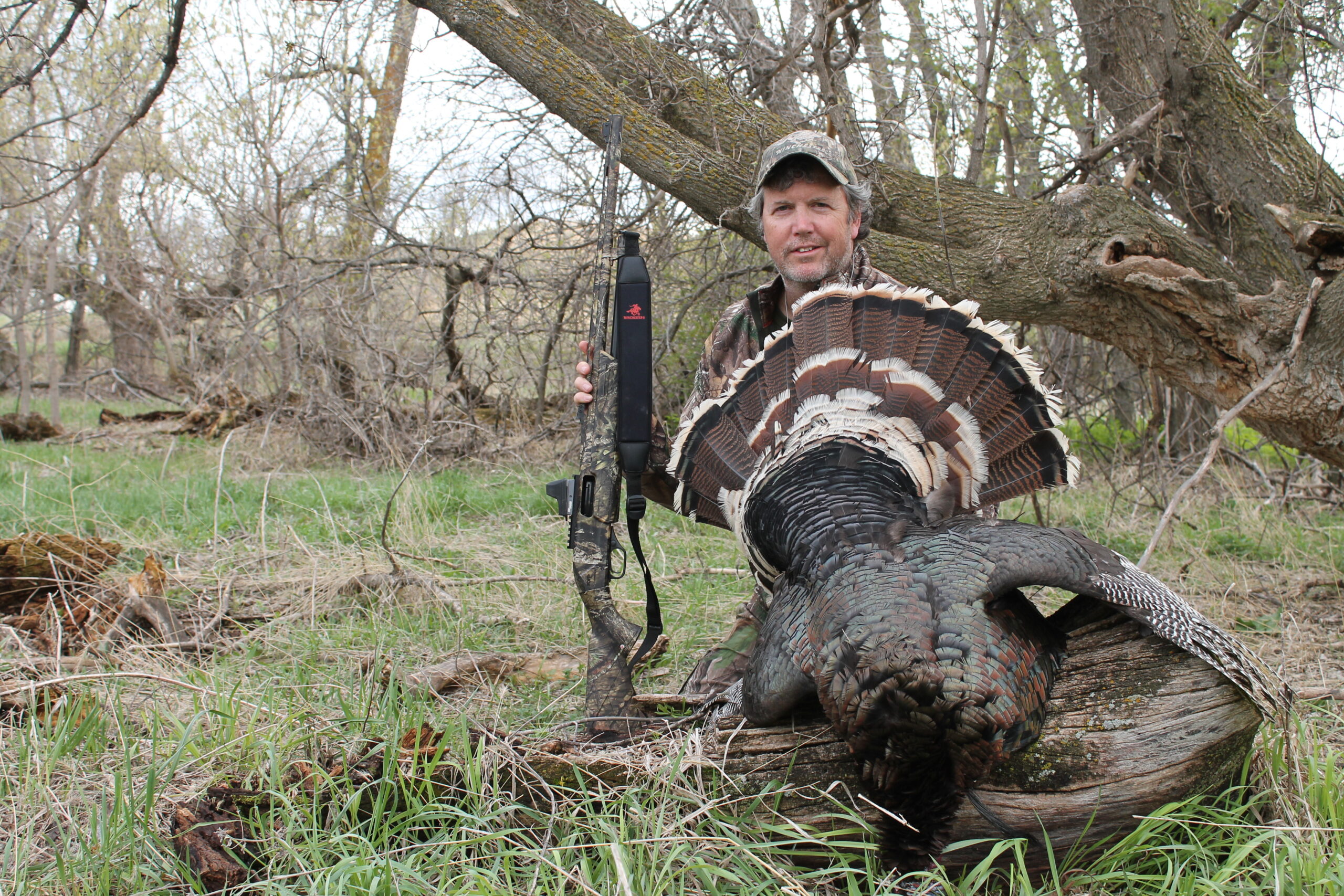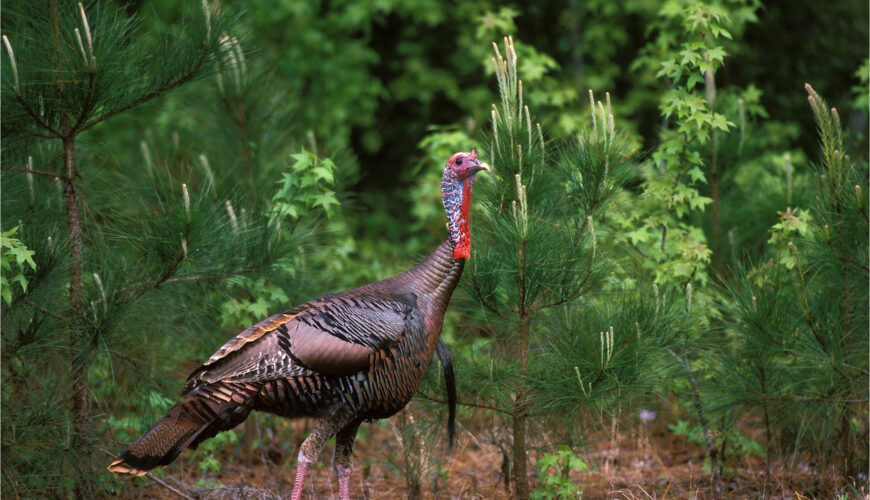Tactics
Make the Most of Early Season Deer Stands
October 6, 2025 •Doug Howlett
May 6, 2025
Let’s be honest—most turkey hunters are gone by 10 a.m., back at the truck with an empty vest, a stale honey bun and stories about the gobbler that “just wouldn’t come in.” But the ones still out there? The ones slipping through shadows while the woods bake? Those guys are killing turkeys.
Midday might not have the thunderous fly-down gobbling or the parade of hen chatter, but it’s got one thing that matters more—lonely toms. By mid to late morning, hens are more often than not sitting on nests and gobblers are out wandering, looking to make bad decisions. If you know how to play it, that window from 10 to 2 can be used to fill tags.
Turkeys don’t go far after their morning routine. Once they’ve fed and fooled around with the hens, they will often circle back to where they heard hens earlier or when the mercury climbs—they’ll hang out in the shade to keep cool, typically along creek bottoms, field edges or inside turns of ridges with cover.
Set up where two or three of these terrain features meet. Get comfortable, glass the area, and call just enough to let a gobbler know a hen’s there, too. The bird that comes in won’t be gobbling his head off—he’ll be sneaking through like a thief. So be ready, keep your eyes—and your ears–open.
Dusting isn’t just a cute turkey habit—it’s a ritual. Midday birds hit dry, sandy patches to fluff their feathers and beat mites to death. If you’ve scouted these spots (usually bare, oval-shaped depressions with feather marks), set up 30 yards off with a crosswind to carry your soft yelps.
This is sit-and-wait turkey hunting at its purest…and for some, most painful. No gobbling, no guarantees. It’s not the most exciting way to hunt turkeys. But it can produce. If a tom rolls in, he’ll be slow, silent and right in your lap.
Sometimes it’s wise to ditch the loud box calls and hard-cutting yelps on a glass call. Midday birds can be coaxed in with softer fare. Stick to soft clucks and yelps, purrs and whines. Use a slate or diaphragm and keep it low. Think contentment, not seduction. If you’ve got a responsive gobbler, resist the urge to hammer him. Trust that he wants you if he responded even once at this time of day. Say less, listen more. If he goes quiet, that’s a good sign. It usually means he’s on his way.

Posting up in likely travel areas during the midday and tossing out a few yelps every 20 minutes can pay dividends. Doug Howlett Photo
And then sometimes the woods just go dead. No gobbles, no movement, nothing. That’s when it’s time to get up and hunt. Ease through the timber, stopping every 200 yards to yelp and scratch in the leaves. Sound like a lone hen feeding. Keep the shotgun ready and your head on a swivel. The gobbler that answers back at noon is probably ready to die. He’s likely alone and is hungry for a hen’s company. If you get a gobble, move fast—but don’t stomp. Use cover. Get set within 100 yards and shut up. Let him do the walking.
Midday decoys are a “depends on the situation” kind of thing. If you’re in an open field, a lone hen decoy can be just the visual cue a cruising tom needs to come on in. But if you’re working thick woods or dust bowls, leave it in the vest. A plastic bird in the shadows can spook a call-shy longbeard faster than a bad Yelp review. If you do use one, keep it close—15 to 20 yards tops. Make it look like it’s feeding or resting. Don’t try to run a jake/hen combo in the middle of the day unless you’re sure there’s a hot-headed tom in the area.
Sometimes it’s better to pick a good spot and let the woods come to you. Along a field edge or on a path that connects two fields are good options. Call every 15-20 minutes. Watch and listen more than you yelp.
One minute the world’s quiet and you’re wondering if you should pack it in, and the next there’s a red head bobbing through the brush. Midday birds often show up without a sound, especially in pressured areas. So, while we are all guilty of using this time for a little midday snooze, doze off at your own peril. You could miss your opportunity.
Midday success is a patience game. You’ve got to outlast the guys who hunted sunrise and bailed. Gobblers killed between 11 a.m. and 1 p.m. are often birds that were henned-up early, then went quiet. By late morning, they’re trolling and looking. There are fewer hunters in the woods, turkeys are less accustomed to being pressured at this time of day so their guard is down…just a little. If you can mentally flip the switch and treat noon like it’s first light, your chances go way up. Eat a protein bar, chug some water, and relax. You’re on turkey time.
